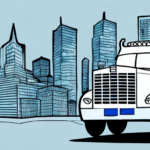Understanding Amazon's Delivery Schedule
Amazon offers a variety of delivery options to cater to different customer needs, including standard, expedited, and same-day delivery. Understanding these options can help you choose the best one for your requirements:
- Standard Delivery: Typically takes 3-5 business days. This is the most common and cost-effective option but is not available on Sundays or holidays.
- Expedited Delivery: Available every day, including weekends and holidays. This option is faster than standard delivery but comes at a higher cost.
- Same-Day Delivery: Offered in select cities, this option ensures your package arrives on the same day you place the order. It is the most expensive delivery option.
Additionally, Amazon Prime members benefit from free two-day shipping on eligible items. Prime members can also opt to upgrade to one-day or same-day delivery for an additional fee.
However, delivery times can be influenced by factors such as weather conditions, carrier delays, and high order volumes during peak shopping seasons. Amazon provides estimated delivery dates at checkout, but these are not guaranteed. For time-sensitive deliveries, consider choosing a faster delivery option or contacting Amazon customer service.
Tracking Your Amazon Package
To monitor the status of your Amazon package, use the platform's tracking system:
- Log in to your Amazon account.
- Navigate to "Your Orders".
- Find the desired package and click on "Track Package".
This will display the latest updates on your package’s delivery status, including any delays or issues.
Note that Amazon's tracking system may not always be accurate. In some cases, packages may be marked as delivered before arrival, or delivery dates may shift due to unforeseen circumstances. If you encounter discrepancies, contact Amazon's customer service for assistance.
Amazon's Delivery Service Partners
To ensure timely deliveries, Amazon partners with various reliable delivery services, including:
The availability of these services varies by region, so check which options are accessible when selecting your delivery preference.
Moreover, Amazon continues to expand its delivery capabilities, introducing initiatives like Amazon Flex, which leverages local drivers, and exploring drone delivery to enhance efficiency.
Common Causes of Delivery Delays
While Amazon strives for prompt deliveries, various factors can lead to delays:
- Weather Conditions: Severe weather like snowstorms, hurricanes, or heavy rain can disrupt delivery schedules.
- Incorrect Shipping Information: Inaccurate or incomplete addresses can misroute packages.
- High Demand Periods: Peak shopping seasons such as holidays or major sales events can overwhelm logistics networks.
- Package Theft: Unfortunately, packages left unattended can be subject to theft, causing delivery issues.
To mitigate these delays, ensure your shipping information is accurate, track your packages regularly, and consider using secure delivery options like Amazon Lockers.
Peak Season Challenges
During peak seasons like Black Friday or the holiday season, Amazon experiences a surge in orders. This increased volume can strain warehouse operations and delivery networks, leading to longer processing and shipping times. To avoid delays:
- Place orders well in advance.
- Opt for expedited shipping options.
- Stay updated on your order status through tracking.
Handling Missing or Delayed Packages
If your Amazon package is missing, delayed, or potentially stolen, follow these steps to resolve the issue:
- Verify the tracking information to confirm the status of your package.
- If the package is late or marked as delivered but not received, contact Amazon customer service.
- Consider using secure delivery options like Amazon Locker or Amazon Key to prevent theft.
Amazon may offer a refund or replacement for missing or undelivered packages upon verification. Additionally, filing a police report is advisable if you suspect theft, as Amazon may require it for claims.
The Effect of Holidays on Delivery Schedules
Holidays significantly impact Amazon's delivery services due to the high volume of orders. To navigate this effectively:
- Order early to accommodate extended delivery times.
- Choose expedited or same-day delivery options if available.
- Monitor your package closely through tracking.
Furthermore, extreme weather during holiday seasons can exacerbate delivery delays. Stay informed about potential weather disruptions and plan your orders accordingly.
Weather-Related Delivery Challenges
Adverse weather conditions can hinder Amazon’s delivery operations:
- Winter Weather: Snowstorms and extreme cold can delay shipments.
- Summer Heat: High temperatures may damage perishable packages or cause logistical issues.
- Natural Disasters: Events like hurricanes or floods can disrupt entire delivery networks.
To minimize the impact of weather on your deliveries:
- Track weather forecasts when expecting important packages.
- Choose delivery times or locations that are less susceptible to weather-related issues.
Expediting Your Amazon Deliveries
To receive your Amazon packages faster, consider the following strategies:
- Choose Faster Shipping Options: Opt for expedited or same-day delivery when available.
- Amazon Prime Membership: Members enjoy benefits like free two-day shipping on eligible items, and can upgrade to faster options.
- Accurate Shipping Information: Ensure your address and payment details are correct to avoid processing delays.
- Use Tracking Tools: Monitor your package's progress through Amazon's tracking system or the Amazon app.
By implementing these measures, you can significantly reduce the wait time for your Amazon deliveries.
The Future of Amazon's Delivery Services
Amazon is continually innovating to enhance its delivery services, focusing on speed, efficiency, and sustainability:
- Drone Delivery: Amazon Prime Air aims to deliver packages within 30 minutes using drones.
- Local Delivery Networks: Initiatives like Amazon Flex employ local drivers to expedite deliveries.
- Artificial Intelligence: AI optimizes delivery routes by analyzing traffic, weather, and other data, resulting in faster and more efficient deliveries.
- Sustainable Packaging: Amazon is committed to making all shipments net-zero carbon by 2040, investing in renewable energy and eco-friendly materials.
These advancements not only improve delivery times but also contribute to reducing the environmental impact of e-commerce.
By staying ahead with technology and sustainable practices, Amazon ensures that it can meet the evolving demands of online shoppers while minimizing its carbon footprint.






















